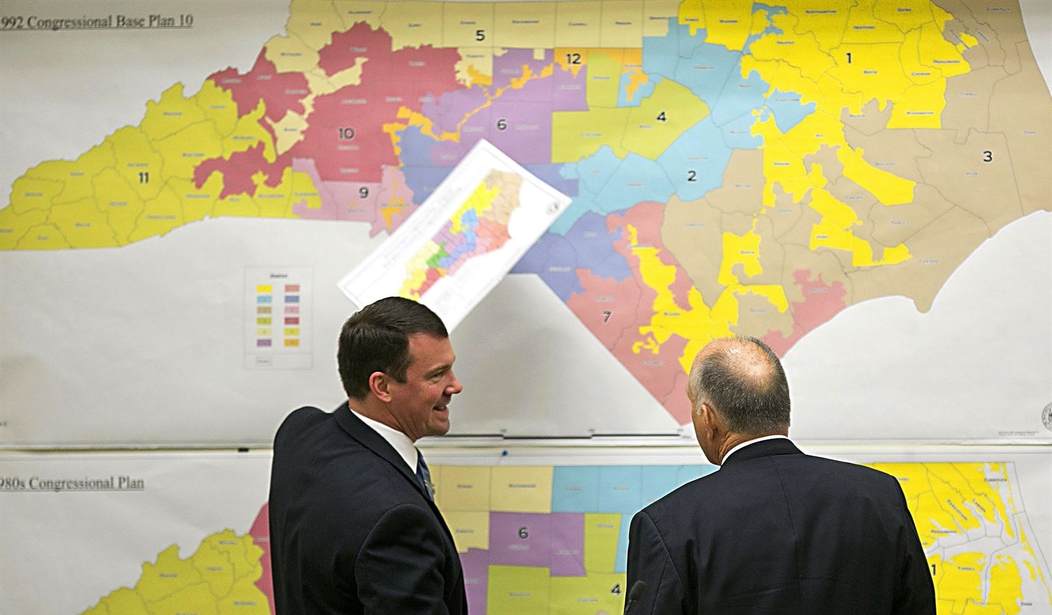The redistricting process is fairly well along, and, as expected, Republicans appear to hold the upper hand in several important states. including Texas and Florida.
But as both Republicans and Democrats take advantage of their partisan control of the redistricting process in various states, the notion that there will be districts that are “up for grabs” in 2022 is rapidly disappearing. In fact, the technology of drawing new district lines has become so precise and sophisticated that almost all congressional races will heavily favor one party or another.
Over the last decade, nearly 90 percent of congressional races held in states where legislators drew the district lines resulted in easy victories — margins of 10 percentage points or greater — for one party or the other, according to a POLITICO analysis. The rate of competitive races was almost twice as high in states where courts or commissions drew the districts.
It’s not just incumbency that’s determining the vast majority of races. Experts in both parties are able to identify exactly where their voters live and draw districts that will give one party or another a better than 90% chance of winning, regardless of who runs.
In an effort to alter that reality and make all races more competitive, some states have formed commissions to draw maps. The catch is that the politicians are usually able to accept or reject what the redistricting commissions have done.
In other instances, the courts have been asked to step in because of perceived racial imbalance in drawing the lines. Democrats believe that unless a district has a black majority, or a near majority, a black candidate doesn’t have a chance. History has shown that to be a load of crap, but it’s still a standard that has to be met in districts with a past history of racial discrimination.
Related: Democrats Only Hate Gerrymandering When the GOP Does It
The “non-partisan” maps drawn by commissions are far more likely to engender competitive congressional races than the partisan gerrymandering that usually goes on.
The most striking example is from the 2018 “blue wave,” when Democrats won control of the House. They needed to flip 23 congressional seats to flip control of the chamber. But even as the national vote swung nearly 10 points toward Democrats compared to the previous election, the party could only flip 10 seats in states where legislators drew the congressional maps. The levees built around many safe Republican seats drawn years before — even in the suburbs, amid fierce anti-Trump backlash — were higher than the crest of the wave.
That was not the case in states where commissions and courts drew the maps. Democrats netted 31 seats in those states, including longtime court-drawn battlegrounds in the Las Vegas suburbs and upstate New York, commission-made districts in California and Arizona and several seats in states, like Virginia and Pennsylvania, where courts declared old districts illegal mid-decade and replaced them with maps that included more swing seats.
The Supreme Court has continuously declined to involve itself in these partisan squabbles over district lines. It is, quite rightly, a matter for several states.
But Democrats are trying to change that. It’s one thing to create bipartisan or nonpartisan commissions to draw the maps. It’s another thing to mandate those commissions from Washington.
Like the misnamed “For the People Act.”
The bill, which was passed by the House this month and will soon be introduced in the Senate, would strengthen protections for communities of color and ban partisan gerrymandering. It would also enhance the ability of voters to challenge racially or politically discriminatory maps in court, require meaningful transparency in the map-drawing process, and mandate the use of independent commissions to draw maps.
Packaged together in one bill, the reforms are the most significant effort in American history to rein in gerrymandering and other abuses that have long plagued congressional redistricting. But with the start of redistricting nearing, the window for Congress to act is closing.
The Democrats have been threatening to destroy the filibuster to pass their For the People Act, but so far, less radical members are resisting. How long they can hold out will probably determine whether states will continue to control their own elections or whether Washington will brush them aside and impose election law on all.










Join the conversation as a VIP Member